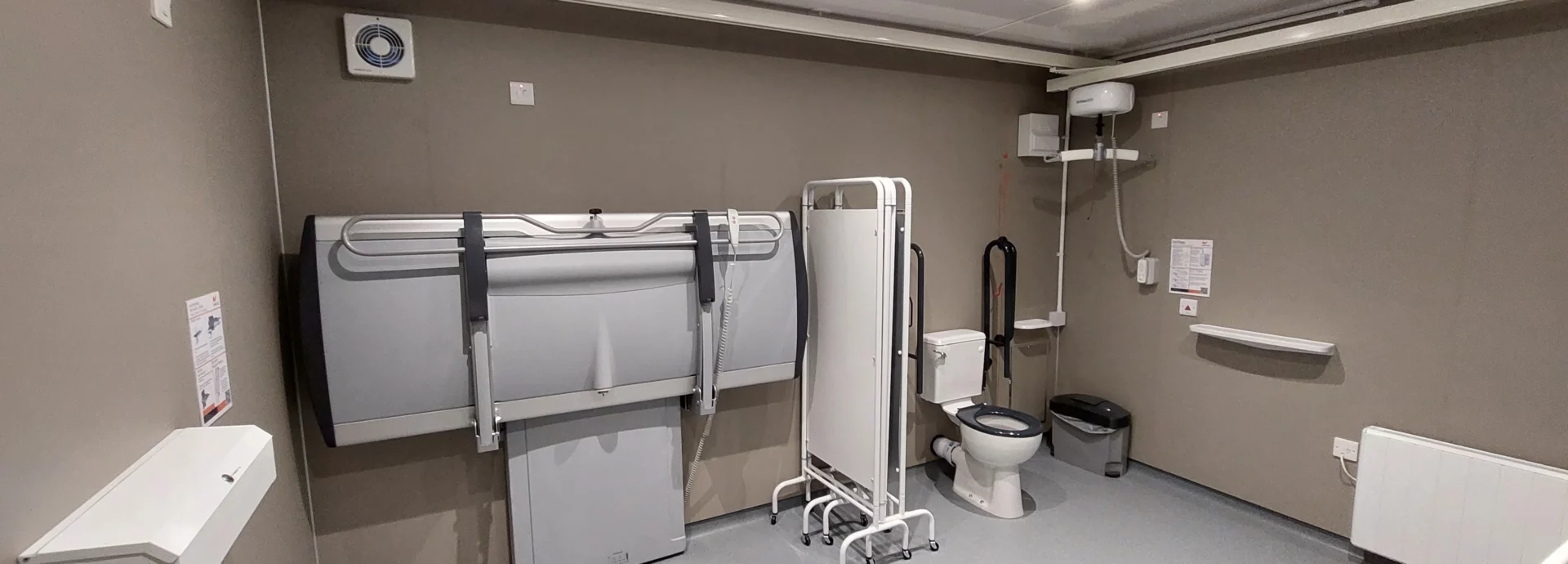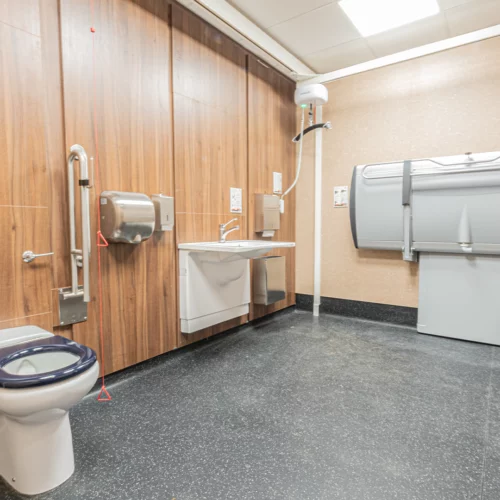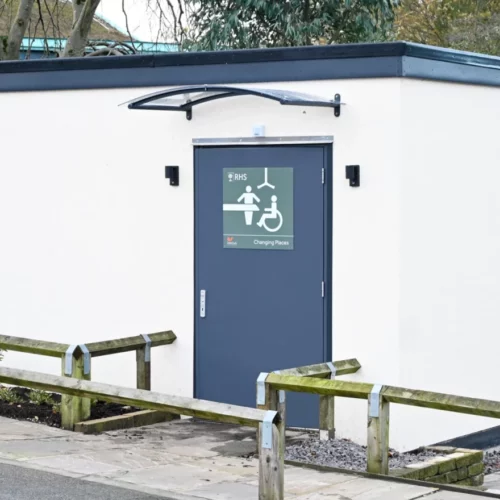Architects and building planners may already be aware of the BS8300:2009 regulations regarding how structures should facilitate the needs of disabled individuals. This is a particularly relevant set of regulations when planning and installing a Changing Places toilet. Not only does this code of practice suggest that Changing Places should be installed in larger buildings and venues (from museums and shopping centres, to airports and hotels), it also lists a few things that the Changing Place should adhere to.
So here are a few things to take into consideration to comply with the BS8300:2009 regulations.
- Signage: The Changing Place toilet needs to have a sign by the entrance that will show people where the nearest unisex accessible bathroom and any baby changing facilities are. This will help to keep the Changing Place free for individuals that actually need it, and it will help others find where their nearest facilities are.
- Dimensions: To allow enough room for the individual and their carer(s) as well as the equipment they may need to use, the regulations state that the Changing Place should be at least 3 metres wide, 4 metres long, with a ceiling height of 2.4 metres. This will give enough space for the individual to use the facilities with ease and dignity. The doorway should also have a minimum effective clear width of 1 metre, with a level threshold.
- Overhead Hoist: The structure of the room and the ceiling should be strong enough to support a hoist unit that is capable of lifting up to 200kg. The hoist manufacturer’s instructions should be clearly displayed for easy-usage. The hoisting system should be able to give the user access to the entire room; a X-Y system is best for this, as the traverse rail can move to any location in the room so that the user can access practically everything.
- Changing Bench: A mobile or a fixed changing bench should be included in the room. It should be height-adjustable to suit the carer’s comfort and it needs to have a safe working load of at least 125kg. The bench should be covered in a material that is suitable for when the user is being changed, or showering. You may want to install a shower chair as well as a changing bench.
- Bins: Every Changing Place should have a large sanitary disposal bin and a standard waste bin. These should be located in convenient locations where they are not in the way when manoeuvring. Ideally, they should be recessed to a wall to avoid them becoming obstacles in the room.
- Height Adjustable Sink: The basin should be height adjustable to suit every user and their needs. It should be power-operated to accommodate easy usage for both the carer and the individual.
- Doc M Pack: This refers to the drop-down rails and grab bars installed through the room for extra security and grip when moving around. The toilet should be in a peninsular position (not in the corner) and the drop-down rails should be installed either side to support the user.
- Privacy Screen: A retractable privacy screen should also be installed to give the user the ability to maintain their dignity when using the toilet, as they will always have a carer or assistant with them.
These are the main things to look out for in the BS8300:2009 regulations, particularly in regards to Changing Places layouts and equipment.
It may sound like a lot to consider. But it’s easy to comply with the standards – we’ve even put together a compliance checklist. It covers the design and building requirements step-by-step. So, you can be sure you’ve ticked all the boxes for a registered Changing Place.
If this is your first Changing Places project, we do still recommend getting in touch with a Changing Places specialist. They can provide consultation and advice to help iron out any creases from the start.



